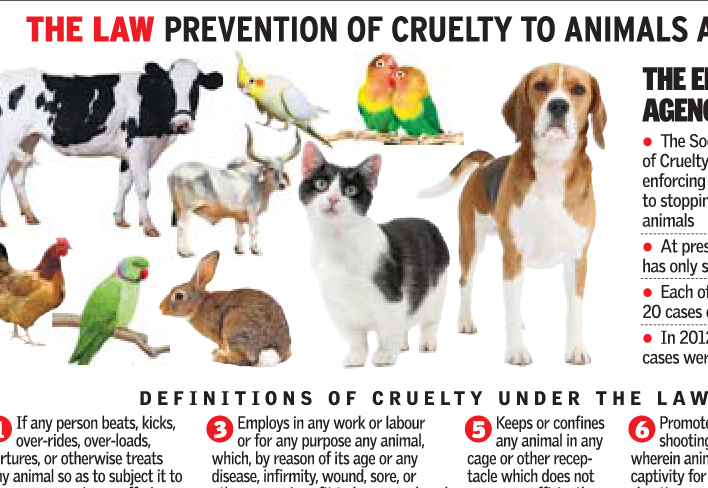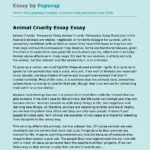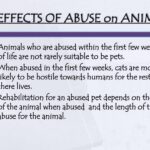Animal cruelty is a pervasive issue that spans numerous facets of society, particularly within the realm of agriculture. While many people associate animal cruelty laws with pets and domesticated animals, there is a profound and often overlooked question: Do these laws extend to farm animals, fish, insects, and rats? This interrogation is essential in fostering a comprehensive understanding of how society perceives and treats its fellow creatures.
Understanding the scope of animal cruelty laws begins with an examination of the legal landscape in which these laws exist. In many jurisdictions, legislation aimed at preventing cruelty to animals prioritizes household pets over agricultural creatures. This disparity raises ethical concerns and questions about society’s values. The sentience of farm animals is widely recognized; however, their protections under the law are frequently inconsistent.
Farm animals, such as cows, pigs, sheep, and chickens, often endure conditions that would be unmistakably classified as cruelty if inflicted upon a pet. Notably, the confinement practices in factory farming—where animals are kept in cramped, unsanitary conditions—tap into the essence of animal welfare debates. Laws aiming to mitigate such treatment exist, albeit inconsistently. Numerous states have enacted statutes regulating the treatment of certain farm animals, particularly concerning their housing and confinement. These regulations often reflect a growing awareness of ethical farming practices and public sentiment towards animal welfare.
However, a significant gap remains. Many farm animals are still subjected to severe mistreatment under the guise of agricultural practices. The terms “humane” and “organic” have become buzzwords, yet the reality often stands in stark contrast to consumer perceptions. The challenge lies in the fact that regulations can often be circumvented, allowing deplorable conditions to persist under misleading claims of animal welfare.
As we expand our consideration beyond farm animals, we arrive at an equally contentious topic: What protections exist for aquatic creatures, particularly fish? The legal status of fish in the context of animal cruelty is an enigma to many. While certain jurisdictions have instituted laws that acknowledge the sentience of fish, the treatment of these aquatic animals remains largely unregulated. Practices such as overcrowding in aquaculture or recreational fishing often go unchallenged, highlighting a profound disconnect in our approach to animal rights. The very definition of “cruelty” is starkly contested when it comes to beings that inhabit water.
Moving further down the evolutionary ladder, we confront the often-ignored category of invertebrates, specifically insects. While they comprise a vast percentage of animal life and display complex behaviors suggestive of sentience, they are frequently excluded from any consideration in cruelty laws. This exclusion brings forth challenging ethical dilemmas. Consider the vast scope of pesticides and other harmful agricultural practices that indiscriminately kill insects. The ramifications extend beyond mere pest control; they signify a broader issue of biodiversity loss and ecological imbalance.
Rats, too, present a complex issue when considered under the lens of animal cruelty laws. Often viewed as pests, rats are subjected to extermination methods that raise ethical considerations about humane treatment. The widespread use of traps and poisons contributes to significant suffering among these animals. They are often afforded little to no legal protection, prompting a necessary discussion: are we, as a society, willing to extend compassion to all creatures, or will we continue to draw arbitrary lines based on anthropocentric viewpoints?
As society grapples with these uncomfortable truths, it becomes paramount to challenge preconceived notions regarding the hierarchy of animal rights. Each category of animal—be they farm animals, fish, insects, or rats—possesses inherent value that merits protection. A paradigm shift is required; one that allows for a more inclusive definition of what constitutes cruelty. It is essential that we cultivate empathy toward all forms of life, moving beyond the limited scope of traditional animal protection laws.
The increasing awareness surrounding these issues has birthed a multitude of advocacy movements aiming to bridge the gaps in animal welfare legislation. These organizations shed light on the often-abysmal conditions that many farm, aquatic, and even insect life endure daily. By elevating the dialogue on these matters, they catalyze public curiosity and foster a desire for a holistic approach to animal rights.
Ultimately, a comprehensive understanding of whether animal cruelty laws apply to farm animals, fish, insects, and rats reveals a mosaic of gaps and inconsistencies. The ethical landscape of animal rights is intricate and fraught with complexities. One thing remains clear: as our society evolves, so too must our approach to animal protection. With a shift in perspective towards more inclusive and compassionate legislation, we can strive for a world where all animals—regardless of their category—are afforded the dignity and respect they undeniably deserve.
In conclusion, let us reflect upon our collective responsibility. The call to action is clear: question the status quo, advocate for broader protections, and nurture an ethos of empathy toward every being with which we share this earth. The future of animal rights hangs in the balance, and it is our duty to ensure that no creature falls through the cracks of legislative oversight.









